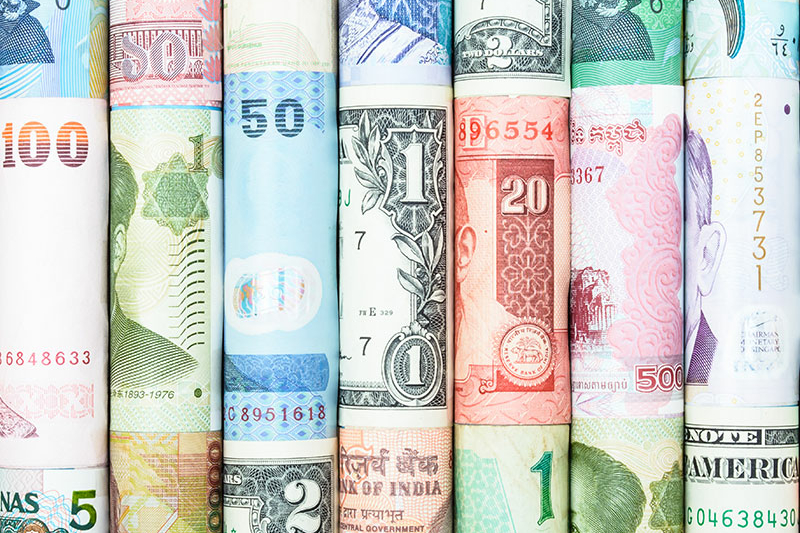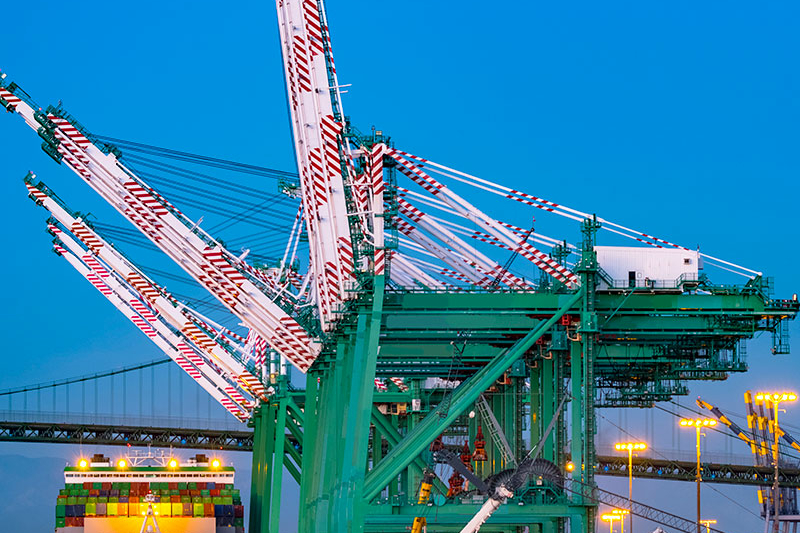Taiwanese businesses and investors must weigh foreign direct investment considerations
While most FDI regimes encourage foreign investment, the growing number and greater sophistication of regimes can add to transaction uncertainty.

After withstanding the impact of COVID-19 in 2020, 2021 witnessed a sharp rebound globally across capital markets, private equity, finance and other corporate deal-making. The rebound was expected—the combination of the pressure to deploy significant amounts of raised capital and pandemic-driven asset value distortion presented attractive value propositions for many stakeholders. The magnitude of the rebound, however, was unexpected.
The exuberance carried over into early 2021, but when the Ukraine conflict started in February 2022, it exacerbated ongoing geopolitical fractures and economic decoupling, quickly dampening any optimism for sustained deal-making in 2022. The security of energy, food and other commodities became a key risk theme in 2022.
However, volatility is not necessarily a bad thing. With careful planning (many steps ahead) on how to manage the current volatility, we believe investors and businesses in Taiwan will be in a prime position to capitalize on Taiwan's critical role in global trade once normalcy resumes.
Following our 2022 Taiwan webinar series in September and October, we hope this year's report for Taiwanese businesses and investors provides helpful guidance during a volatile time.
We begin with an overview of the current state of affairs related to global regulatory developments in foreign direct investment (FDI). Various black swan events in 2022 drove, and will continue to drive, geopolitical fractures and economic decoupling globally. In addition, global FDI regulatory regimes have rapidly matured to the point where it is critical for Taiwanese investors and businesses to ensure maximum deal certainty by considering FDI analysis as probably the most important task they need to manage before embarking on any cross-border investments relating or peripheral to critical infrastructure and technologies.
We then summarize recent European Union court judgments that established what is deemed anti-competitive behavior in the context of exclusivity rebates. Taiwanese businesses trading in dominant positions in the EU should carefully weigh the impact of these judgments on trading practices.
Next, we provide our thoughts on the trends and headwinds in M&A and corporate transactions relating primarily to Taiwan and the rest of the Asia-Pacific region. We hope the thematic investment developments, changing jurisdictional focus and the excess liquidity data points flagged in the overview will help guide investors and businesses in their quest for low-beta high-alpha investments.
To underscore emerging thematic investment developments and value discovery in Taiwan and globally, this year we introduced a webinar session focusing on ESG. This is a rapidly evolving theme which, given its growing importance in the capital markets, financing and corporate transactions, is driving increasing regulatory regimes globally. Because of differing ESG compliance standards globally, investors and Taiwanese businesses should carefully consider the complexities in structuring a compliant and bankable ESG-focused transaction.
This year, we also introduced a webinar session focusing on fund formation. In our report, we summarize the concept of a continuation fund, a fund product that may be of interest amid volatility, and which has affected fund exits.
And finally, we summarize the state of affairs in global sanctions. The CHIPS and Science Act, which came into force in August 2022, is particularly relevant to Taiwan semiconductor companies. Given Taiwan's dominant position in the global semiconductor industry, this legislation has significant impact on the industry's supply chain and economics.
We look forward to discussing these and other issues with you.
While most FDI regimes encourage foreign investment, the growing number and greater sophistication of regimes can add to transaction uncertainty.

Key 2022 judgments apply a five-factor analysis outlined by the EU's highest court in 2017.

How Taiwanese and other firms have weathered 2021’s perfect storm and its aftermath.

As stakeholders embrace ESG considerations, risks, opportunities and challenges to integration remain

These funds create opportunities, but can present legal and business challenges.

Understanding the recent ban of certain chips to China and the new semiconductor-related export controls


How Taiwanese and other firms have weathered 2021's perfect storm and its aftermath
*Benjamin Y. Li and Derrick Yang of Lee and Li co-authored this publication
After two years of pandemic caution and amid perpetually increasing valuations, growing piles of dry powder and pent-up investment willpower, 2021 exploded in a global deal frenzy unrivaled in the past decade. On the heels of the SPAC/de-SPAC tsunami, investors and corporates alike took advantage of accessible financing across the capital structure and the extreme willingness of buyers and sellers to transact, and to do it quickly. Relaxed physical barriers in the form of easing travel restrictions spurred on dealmakers. It was the perfect storm of circumstances, resulting in an exceptional year for M&A. Taiwan was no exception to the feeding frenzy: Industries such as banking, semiconductors and telecoms in particular1 saw significant activity, as firms aimed to concentrate core business units and/or streamline resources to create synergies through acquisition or divestiture.
The breakneck pace at which deals were executed, though, was unequivocally unsustainable, and the subsequent calm of 2022 was inevitable. In retrospect, what felt like an overdue return to pre-COVID M&A deal-making was possibly just a byproduct of market participants pushing through what they consciously or subconsciously knew to be a narrow window of liquidity and opportunity. However, the doom and gloom that some attribute to 2022 is not actually as pronounced as some may say—at least not in every market or relative to years prior to 2021.
Much as 2021 saw the coalescence of a perfect storm of deal drivers, 2022's pullback represented a coincidence of casualties that shook confidence and sent macro ripples through the market. One off quarter for what investors assumed would be a perpetually growing tech giant seemed to send the entire tech market reeling, with crypto not far behind. The tumult was symptomatic of a broader valuation uncertainty sentiment. In the same vein, SPAC fervor officially obtained bubble and popped-bubble status—in part, because reality set in for investors and the market as they saw publicly the performance of many of these firms through the lens of the reeling tech market, with the de-SPAC "index" (one or more trackers of post-business combination stock performance) reflecting a value drop of anywhere from 60 to 75 percent year-on-year, redemptions as high as 99 percent (or higher) and a euphemistically "challenging" PIPE market.2 General capital markets (IPOs) fared not much better, and with rising inflation and interest rates, credit flailed and exit opportunities for sponsors accordingly dwindled. Actual and threatened conflicts, such as in Ukraine, had knock-on effects in supply chains and elsewhere globally, and unprecedented COVID-19 lockdowns in Shanghai drastically shifted the deal-making landscape.
As noted above, though, these casualties and shifts did not deter deals wholesale, but seemed merely to infuse a deep breath of caution and responsibility into market participants, slowing down execution time and raising the bar generally for what would pass muster for board or investment committee approval. Indeed, for the right target, de-SPACs still can be successful, and Taiwan seemed to be a haven for such companies—namely, Gogoro,3 Gorilla Technology4 and Perfect.5 Overall, inbound activity in Taiwan in H1 2022 actually grew year-on-year, driven in large part by renewable energy M&A, reflecting in part a counterpoint to energy concerns elsewhere in the world, but also a growing focus on ESG.6 The focus on Taiwan was also indicative of a broader shift away from big-ticket deals in China due to travel restrictions into and within the country, as investors and companies looked to other parts of Asia or even Europe and the Americas for the right opportunities.
There was activity for the right type of deal too. General investor caution, tightening credit and financing, and a dearth of larger ticket deals made LBOs challenging, while lower risk co-investments, secondaries and similar types of transactions dominated. With increasing question marks around private firm valuations and declining trends in public markets, there was also a renewed interest in public M&A and take-privates. For Asia-based targets, which are often largely closely held by the original founders or a sponsor, the market presents an opportunity to effectively recapitalize at a discount. Growth rounds in tech have slowed to a drip, but have attracted some investors with more structured products. The hit to crypto has pushed some funds to the brink, naturally sparking restructuring activity in the sector. Regional circumstances also came into play, with China's travel restrictions pushing Asia-based investors looking more to Southeast Asia, Korea and Japan, and with many markets in the EU remaining relatively hot as a target destination. Domestically, Taiwanese firms also took advantage of circumstances, prime for vertical consolidation, with firms seeking to forge alliances and create a competitive edge against other regional or global competitors.
In retrospect, 2022 may feel like a sleepy year to many, but this conclusion may vary depending on who you ask or which data set you consult. When compared against the years leading up to 2021, by many accounts, activity has maintained or even grown.7 So, as with many things, in understanding and, potentially navigating, these turbulent times, keeping one's perspective will be paramount.
Where do we go from here? While many remain cautious about where markets are headed, incredible deal fuel continues to amass in the Asia-Pacific region and globally. With more than US$650 billion in APAC-focused dry powder,8 there will continue to be tremendous pressure on sponsors to deploy, exit and show returns. Potentially easing travel restrictions in China will likely be a boon to deal-making in the region, and a promising outlook on the PCAOB-related standoff for cross-border listings may ease exit pressure. However, the circumstances do not call for the same level of fast-and-loose deal-making as last year.
A similar theme is present in the waning de-SPAC market, with the number of SPACs facing expiration coming to a head, there is incredible incentive for sponsors to execute a deal in a short timeframe. But as the financing market will attest, closing a deal that is economically rational (i.e., with enough capital and public reception to keep afloat) is going to depend greatly on whether the target is right—right to substantiate valuation and right to be public.
Many pundits portend an imminent recession, but perspective reminds us that one person's meat is another person's poison. Declining valuations, lingering commercial effects of COVID-19 and other geopolitical pressures will all force the number of consolidations and probably present clear winners and losers. Sponsors, major financial institutions and firms alike will not be immune to these effects, as we are already beginning to see. Taiwan too will share in this risk/reward. Geopolitical risks might persist in the near future and cannot be easily gauged by foreign investor activity when making the decision to invest in Taiwan. Strong foreign currencies such as the US dollar will call for further deployment. Advanced technology and semiconductor industrial clusters can provide certain shielding for Taiwan too, and are likely to come out above others in the fray. We will likely see more M&A activity from these winners, as they seek to take advantage and diversify. Ultimately, the uncertainty of these turbulent times will breed opportunity for those with the right perspective.
1 White & Case M&A Explorer/Mergermarket
2 Bloomberg. March 2022
3 Wall Street Journal. September 2021
4 SPACInsider. July 2022
5 Reuters. March 2022
6 White & Case M&A Explorer/Mergermarket
7 White & Case M&A Explorer/Mergermarket
8 Asia-Pacific Private Equity Report 2022. Bain & Company
White & Case means the international legal practice comprising White & Case LLP, a New York State registered limited liability partnership, White & Case LLP, a limited liability partnership incorporated under English law and all other affiliated partnerships, companies and entities.
This article is prepared for the general information of interested persons. It is not, and does not attempt to be, comprehensive in nature. Due to the general nature of its content, it should not be regarded as legal advice.
© 2022 White & Case LLP